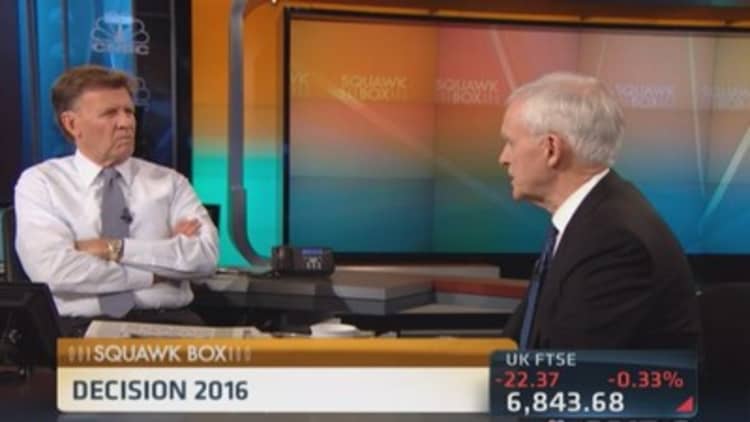Obamacare put a big dent in the uninsured rate—but will probably take the summer off before it tackles another steep decline.
According to a Gallup survey released Thursday, the percentage of people in the U.S. who lack health insurance fell to a six-year low in the second quarter of 2014, registering the lowest rate since Gallup began questioning people about their insurance status in 2008.
By the end of June, 13.4 percent of the population lacked health insurance, a 2.2-point drop from the prior quarter, said Gallup.
Read MoreObamacare's big winners: Young, Latino and poor
That's down significantly from mid-2013, when the uninsured rate hit a record high of 18 percent of the population.
The plunge in that rate began in late 2013, as Obamacare exchanges began selling health insurance in earnest, and as enrollment in government-run Medicaid programs increased.
For its survey, Gallup randomly sampled more than 45,000 adults between the beginning of April and the end of June. The survey has a margin of error of +/- 1 percent.
Gallup said a big driver behind the second-quarter decline occurred at the beginning of April, when several million people signed up for Obamacare plans after an effective two-week extension of the March 31 enrollment deadline.
Since then, the uninsured rate has remained flat, suggesting that there will not be any further significant decreases in the rate until after Obamacare's second open-enrollment season begins in mid-November, Gallup noted.
Read MoreAnd the Emmy goes to ... Obamacare?
Much of the spike in the insured rate came from people who bought individual health plans either via government-run Obamacare exchanges or outside those exchanges, rather than from employer-based insurance that covers more than 40 percent of the population. The vast majority of people who bought individual plans on the government-run Obamacare exchanges received federal subsidies to help pay for that insurance.
Gallup noted that in its latest survey, 20.7 percent of adults under age 65 said they are insured through an individual plan purchased by themselves or a family member, compared with 16.7 percent in late summer 2013.
A smaller part of the increase in the number of people with health coverage came from Medicaid enrollment.

Last summer, 6.8 percent of the population reported being covered by Medicaid, which is jointly run by state and federal governments. By the end of June that had grown to 8.4 percent.
Read MoreThe BIG threat to Obamacare you've never heard of
Some of that enrollment is because of the expansion of Medicaid eligibility to nearly all poor adults in about half of the U.S. states, which is one of the main goals of Obamacare, formally known as the Affordable Care Act. The other states have tighter restrictions on who qualifies for Medicaid.
This year is the first under the ACA that nearly all Americans are required to have some form of health coverage, or face a fine next year that can be as much as 1 percent of their taxable income.
Gallup's poll came out the same day as a Commonwealth Fund survey that showed that the biggest reductions in the uninsured rate had been seen in three groups: young adults, Latinos and the poor. Those groups have historically had the highest uninsured rates.
The Commonwealth Fund report also found that the uninsured rate for low-income people fell in states that were expanding Medicaid eligibility, while that rate for such people in non-expansion states had essentially stayed the same.
—By CNBC's Dan Mangan


